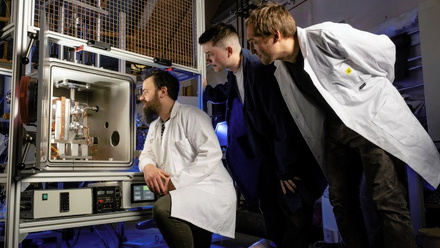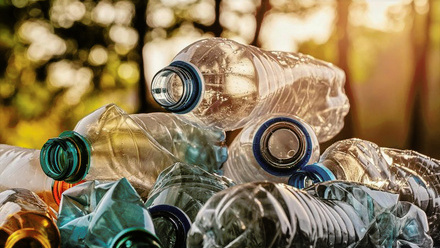Fitness sensor alerts user to muscle fatigue
A prototype wearable sensor using a MXene-based hydrogel (M-hydrogel) can measure different pressures on muscle movements and alert the wearer to fatigue-induced acid build-up.

Developed by scientists at the King Abdullah University of Science and Technology (KAUST), Saudi Arabia, the device could be used to correlate pH changes in a person’s perspiration as they exercise to determine how fatigued their muscle is.
MXenes, ultra-thin nanomaterials made up of non-toxic metals such as titanium, combined with carbon or nitrogen atoms, have naturally high conductivity and abundant surface charges. These unique characteristics make the nanomaterials ideal for use in biosensors to detect small changes to chemical concentrations.
In 2019, Professor Husam Alshareef’s research team took the first step in developing KAUST’s prototype by creating a MXene composite electrode enclosed in a wearable armband sensor.
According to the findings, published in the journal Small Methods, the device’s modular design uses MXene inserts loaded with appropriate enzymes to absorb perspiration, and can also detect analytes such as a glucose and lactic acid in human sweat.
The scientists next explored how hydrogels could be combined with MXene sheets to develop a prototype wearable sensor that is compatible with human tissues both mechanically and electrically.
M-hydrogels, the researchers say, can significantly increase the functionality compared to MXene-free hydrogel. MXenes make the hydrogels more conductive, more electrochemically active, and can endow it with unique photothermal and plasmonic properties.
The Small Methods paper reveals the team ‘synthesised MXene-polyacrylic acid (PAA) and MXene-polyvinyl alcohol (PVA) hydrogels to investigate the internal ions, specifically their response to external stimuli such as pH and mechanical strain’, on the M-hydrogel’s electromechanical properties.
The PAA/PVA matrix was selected, say the researchers, ‘because it is a well-known pH-sensitive hydrogel, based on the interaction between polymer and solvent’. In addition, ‘the resistance of MXene-PAA/PVA hydrogel can be changed by both strain and pH level, which can enable interesting applications’.
When the scientists mix the MXene sheets and hydrogels, high levels of mobile ions in the hydrogel produce strong sensitivity to the mechanical strain that occurs during exercise.
‘Initially, the MXene sheets are randomly oriented within the hydrogel, but once you apply pressure to them, the sheets become more horizontally orientated,’ explains Alshareef.
‘Because MXenes have a high concentration of negative charges on their surface, horizontal arrangements strongly affect ion movements within the hydrogel, and we can measure different levels of pressure change.’
The researchers say they can track muscle movement by producing distinct electrical resistance patterns as mechanical stress increases.
By dropping a phosphate buffer saline (PBS) solution with different pH values onto the M-hydrogel, the material’s resistance suddenly decreases. This gradually recovers to its initial value when the solution is steadily removed, indicating the reversible pH sensitivity.
The researchers also note that when additional drops of PBS solution with phosphine are added, the M-hydrogel’s resistance decrease is greater.
‘As we exercise and our muscles get tired, the sensor sees the new chemical environment and produces different electrical resistance versus stress curves,’ explains Kang Lee, a former KAUST postdoc and the study’s lead author. ‘By comparing these curves to reference curves for a given sector, we can determine the pH of the sweat and how fatigued the muscle is.’
Further work is needed however before the sensor’s commercial application is realised. ‘We need to establish proper baselines by doing clinical trials to calibrate the baseline sensor performance to work with different people,’ says Alshareef. ‘We need to make sure the pH level in every person’s sweat corresponds to the same state of fatigue.’







